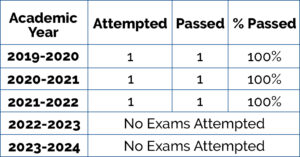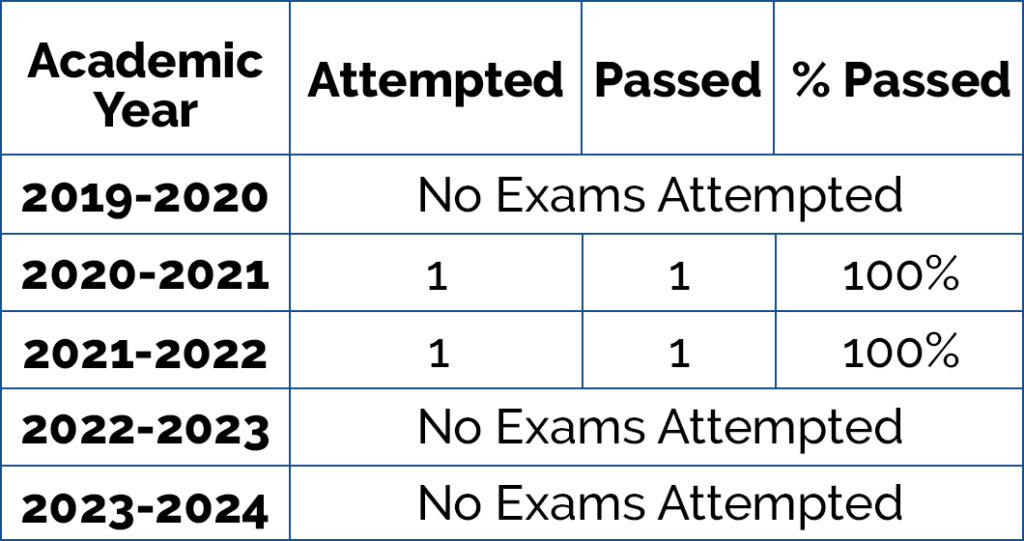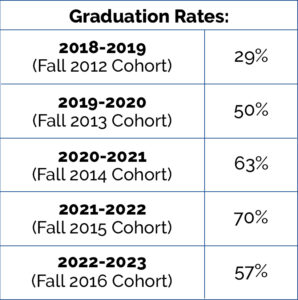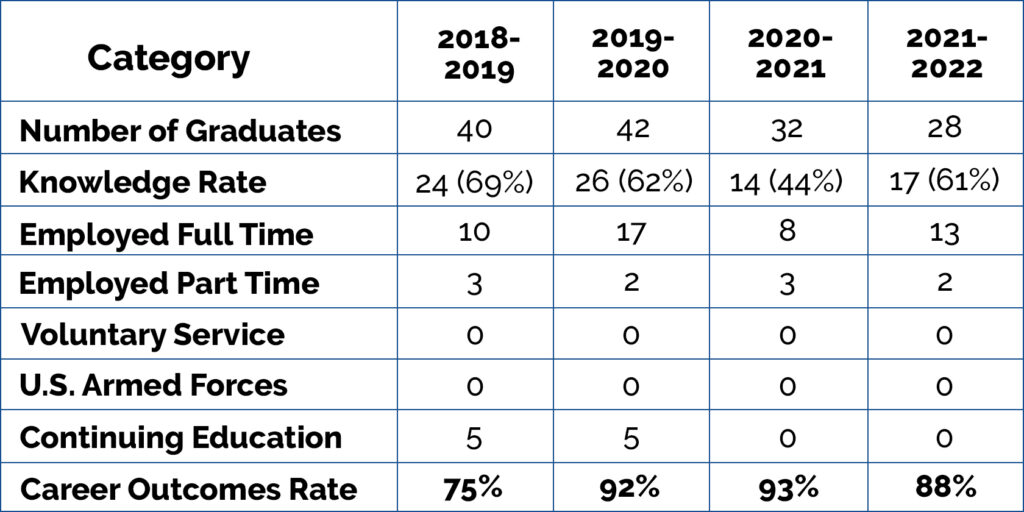The mission of Criswell College is to “provide ministerial and professional higher education for men and women preparing to serve as Christian leaders throughout society.” To evaluate its success in achieving its mission, the College has established several criteria for evaluation with respect to student achievement. For each of these the College has established achievement goals, as well as thresholds of acceptability which identify when the College is at a point requiring intervention to maintain appropriate student achievement. The achievement goals, thresholds of acceptability, and actual outcomes for each of the criteria relating to student achievement are published below.
Course Completion
Course completion rates are leading indicators of students’ likelihood to graduate. The College calculates course completion by dividing the number of credits earned by the number of credits attempted for a given year.
Achievement Goal:
Course completion rate: 95%
Threshold of Acceptability:
85%
Outcomes:
Retention
Retention rates are leading indicators of students’ likelihood to graduate. The College defines its retention rate as the percentage of first-time bachelors (or equivalent) degree-seeking undergraduates from the previous fall who are again enrolled in the current fall. The following retention rates are based on data submitted to the Integrated Postsecondary Education Data System (IPEDS) implemented by the federal government. (Please note that the college’s first-time cohorts—especially first-time, part-time cohorts—are very small, which means that small changes in numbers of returning students have significant impact on retention rates.)
Achievement Goal: First year students returning the next year:
80% of first-time, full-time students
60% or first-time, part-time students
Threshold of Acceptability:
63% for first-time, full-time
40% for first-time, part-time
Outcomes:
Graduation
Graduation rates reflect the success of students in completing their degree programs. The College defines its graduation rate as the percentage of full-time, first-time, degree/certificate-seeking undergraduate students within an adjusted fall cohort who complete a degree program within 150% of normal time. The following graduation rates are based on data submitted to the Integrated Postsecondary Education Data System (IPEDS) implemented by the federal government.
Achievement Goal:
Graduation rate for first-time students: 45%
Threshold of Acceptability:
26%
Outcomes:
Career Outcomes
Career outcomes rates measure the success of students after graduation. The College defines the outcomes rate as the percentage of graduates who fall into the following categories:
- Employed full time
- Employed part time
- Participating in a program of voluntary service
- Serving in the U.S. Armed Forces
- Enrolled in a program of continuing education
The College tracks the career outcomes rate according to standards and protocols established by the National Association of Colleges and Employers.
Achievement Goals:
Career outcomes rate for graduates: 90%.
Threshold of Acceptability:
80%
Outcomes:
Licensing Exams
The College tracks licensing exam pass rates for two of its degree programs. For graduates of the Master of Arts in Counseling (licensure track), the College tracks pass rates for the National Counselor Exam. For graduates of the Bachelor of Science in Education, the College tracks pass rates for the Texas Education Agency’s Pedagogy and Professional Responsibilities exam and Core Subjects Early Childhood-6 exam.
Achievement Goals:
- National Counselor Exam: 100%
- TEA Pedagogy and Professional Responsibilities Exam: 95%
- Core Subjects Early Childhood-6 Exam: 85%
- Science of Teaching Reading Exam: 95%
Thresholds of Acceptability:
- National Counselor Exam: 90%
- TEA Pedagogy and Professional Responsibilities Exam: 90%
- Core Subjects Early Childhood-6 Exam: 80%
- Science of Teaching Reading Exam: 90%
Outcomes:
National Counselor Exam
TEA Pedagogy & Professional Responsibilities Exam

Core Subjects Early Childhood-6 Exam

Science of Teaching Reading Exam







